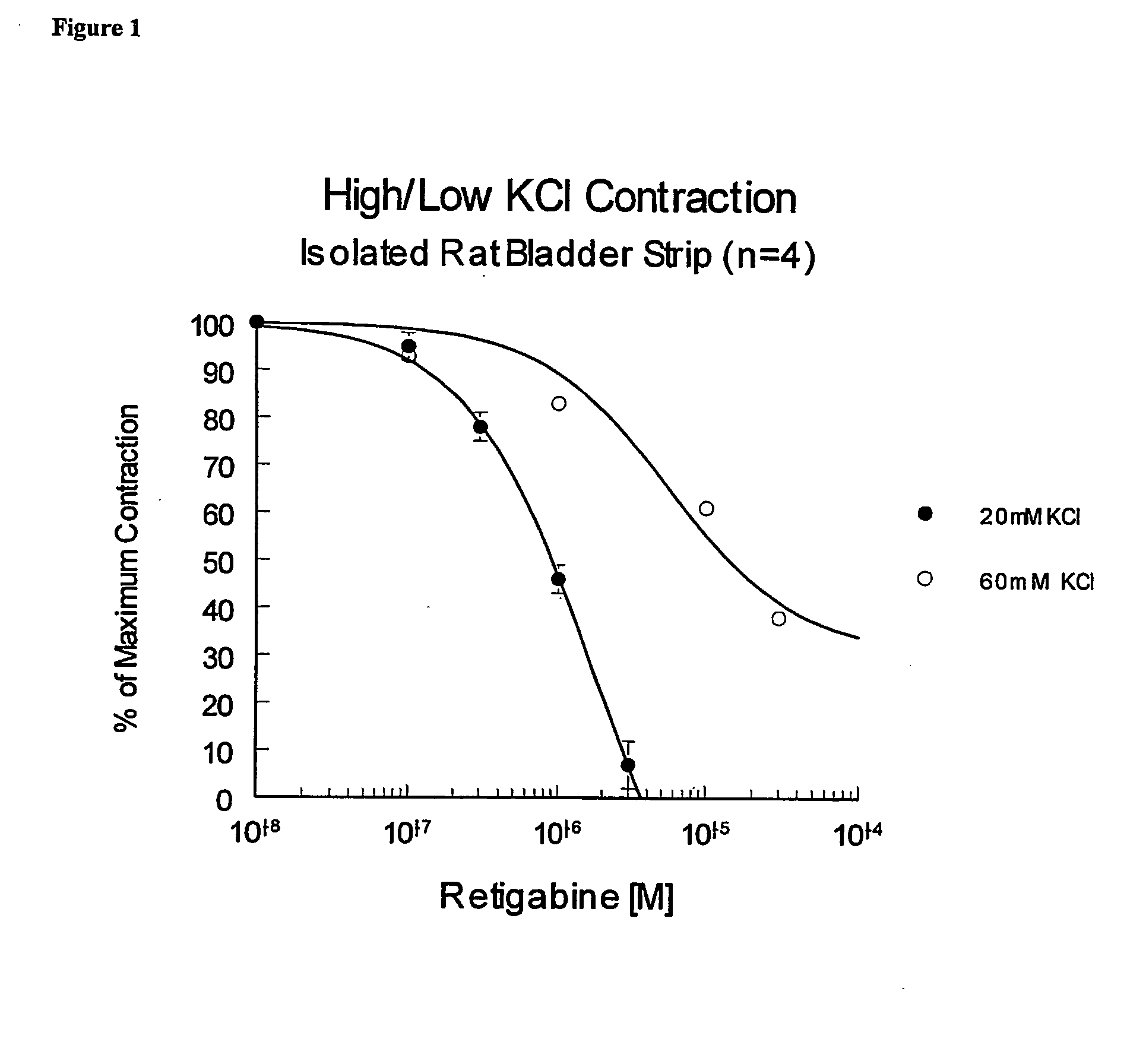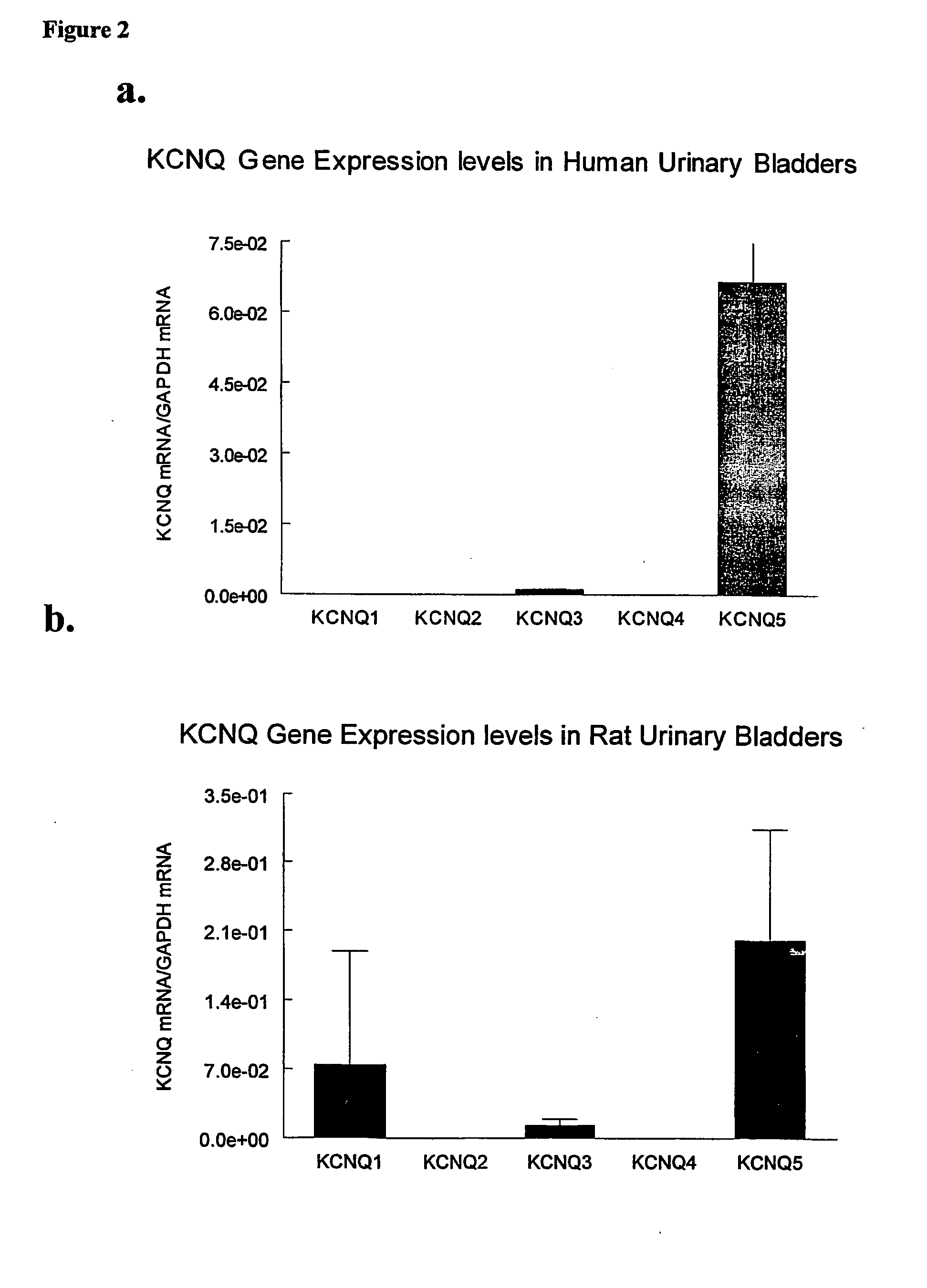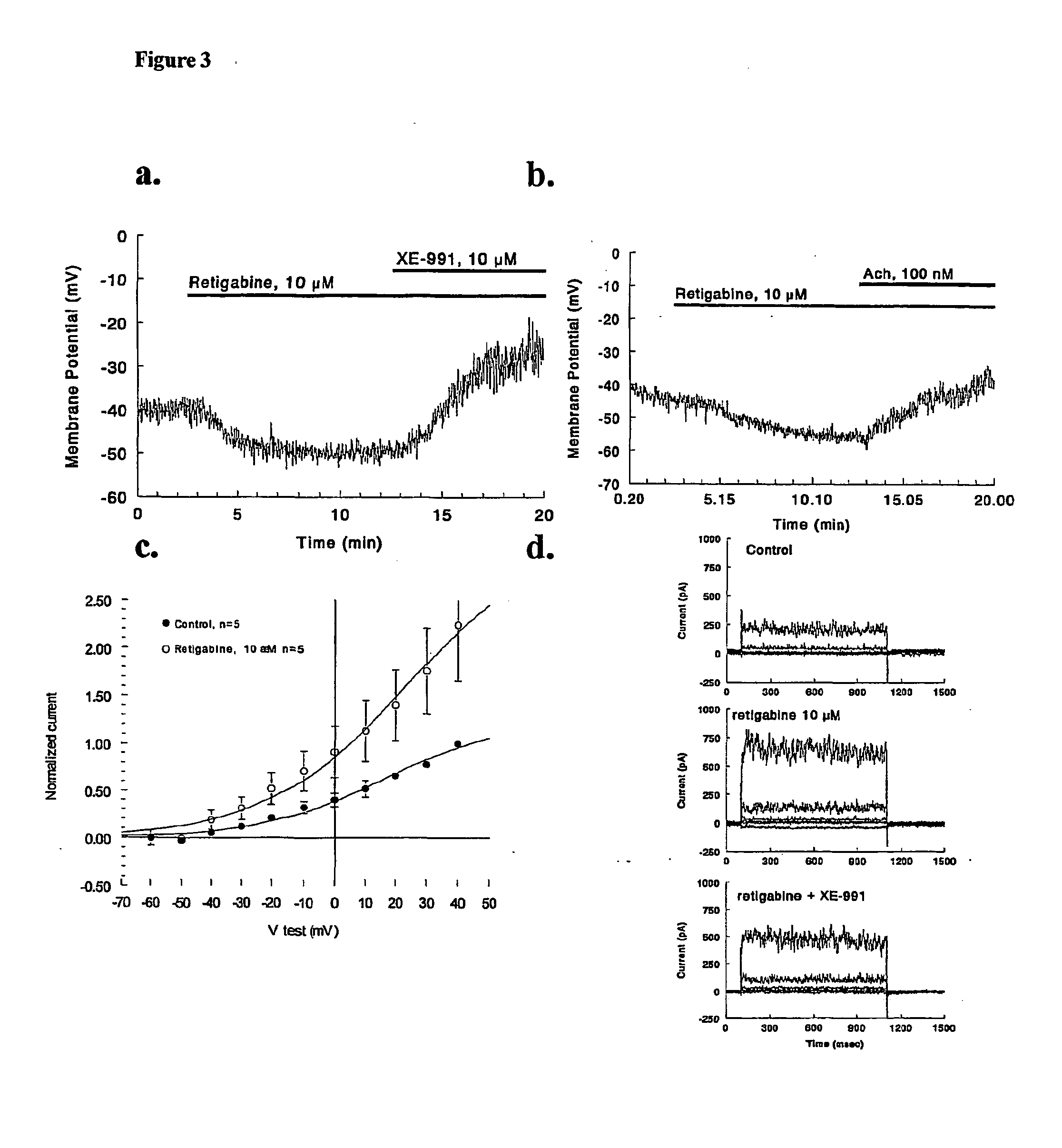Methods of selecting compounds for modulation of bladder function
- Summary
- Abstract
- Description
- Claims
- Application Information
AI Technical Summary
Benefits of technology
Problems solved by technology
Method used
Image
Examples
example 1
[0045] High Throughput Screening
[0046] Mammalian (e.g., HEK-293, COS) cells are transfected (either stable or transient) with cDNA or cRNA for KCNQ potassium channels. These cells express and incorporate functional KCNQ channels in their membrane that modulate membrane potential. Several methods are available to monitor transmembrane potential. One such method employs the use of a Fluorescence Imaging Plate Reader (FLIPR), and voltage-sensitive fluorescent dyes. Transfected cells are grown on the well bottoms e.g., of a 96 or 384 well plate. The instrument has the capability of pipetting into and recording fluorescent signals from all wells simultaneously. In this way, large numbers of compounds can be tested rapidly for their ability to modulate the KCNQ-dependent transmembrane potential. Compounds, which cause hyperpolarization of the transfected cell membrane, are further analyzed through various techniques. In one example, the fluorescence imaging plate reader (FLIPR) uses bis-...
example 2
[0048] In Vitro (Activity) Assays—Secondary Analysis
[0049] Isolated Rat Bladder Strip
[0050] Male Sprague-Dawley rats (200-400 grams) are euthanized by CO2 inhalation and exsanguination. Their urinary bladders are rapidly removed and placed in 37° C. physiological salt solution (PSS) that contained the following (mM): NaCl (118.4), KCl (5), CaCl2 (2.5), MgSO4 (1.2), KH2PO4 (1.2), NaHCO3 (24.9) and D-glucose (11.1) gassed with O2 / CO2 (95% / 5%) to achieve a pH of 7.4. The dome of the bladder is isolated from the trigon region and this tissue is then cut into 4-5 mm wide by 10 mm long strips. One end is secured to the bottom of a water jacketed tissue bath and the other to a Grass isometric force transducer (Grass Instruments, Quincy, Mass.). Tissues are pretensioned (0.25 to 0.5 grams), and after 30 minutes of equilibration are contracted with an additional 15 mM KCl (total of 20 mM) and again allowed to equilibrate until the preparations are contracting steadily. Any of a variety of ...
example 3
[0056] Current Clamp Recordings
[0057] Cell resting membrane potential (RMP) is measured in current clamp using the above mentioned instrumentation and pipette solutions. For these experiments nystatin is also added to the pipette solution (100 μg / ml) to allow recording through utilization of the perforated patch technique (Korn, et al, 1991). After stable access is achieved, RMP is recorded for a 5 minute control period followed by 5 minute of drug application (0.3 and 1.0 μM). After this time, various antagonists (linopirdine, XE-991) are added to the perfusate and RMP is recorded for an additional 5 minutes.
[0058] Voltage Clamp Recordings
[0059] Whole cell recordings are made using broken patch access. Currents are evoked using either voltage steps (Vh=−50; Vt=−60 to 40 mV) or voltage ramps (−60 to 40 mV at 3.3 mV / sec.). The exact voltage clamp protocols are well known in the art. After stability is achieved control currents are recorded. Next, test compound is added to the supe...
PUM
| Property | Measurement | Unit |
|---|---|---|
| Membrane potential | aaaaa | aaaaa |
Abstract
Description
Claims
Application Information
 Login to View More
Login to View More - Generate Ideas
- Intellectual Property
- Life Sciences
- Materials
- Tech Scout
- Unparalleled Data Quality
- Higher Quality Content
- 60% Fewer Hallucinations
Browse by: Latest US Patents, China's latest patents, Technical Efficacy Thesaurus, Application Domain, Technology Topic, Popular Technical Reports.
© 2025 PatSnap. All rights reserved.Legal|Privacy policy|Modern Slavery Act Transparency Statement|Sitemap|About US| Contact US: help@patsnap.com



